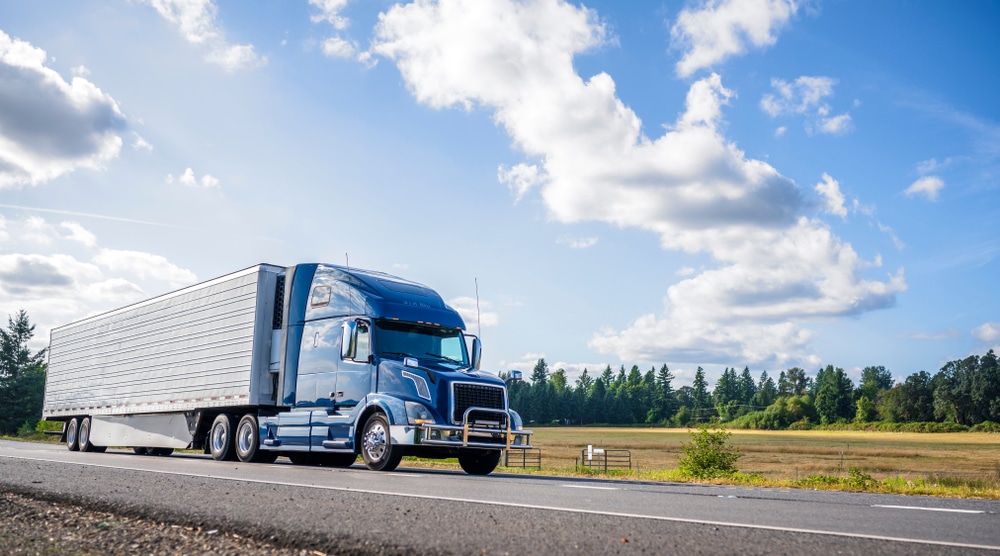Trucks are versatile and powerful vehicles for handling various tasks, from hauling heavy loads to tackling off-road adventures. With these capabilities, trucks are valuable commodities for several industries. However, multiple truck specifications and features may overwhelm you.
If you’re in the market for a new set of big rigs, it’s best to equip yourself with the proper knowledge before making any decision. In this blog post, you’ll learn primary considerations when buying a new truck.
What to Consider When Buying a Truck: 10 Specifications
When purchasing a truck, several factors can help you weigh your options. Whether you’re a seasoned truck owner or a first-time buyer, understanding these essential specifications is necessary for a well-informed decision.
1. Fuel efficiency
In trucks, fuel efficiency is a vital consideration that can affect your operating costs and the environment. When evaluating trucks, look for models with advanced fuel-saving technologies like hybrid engines, cylinder deactivation, or diesel options. Improved fuel efficiency not only saves you money on gas but also reduces your carbon footprint.
2. Engine
The engine can make all the difference in vehicle performance. If you want to get the most out of your truck, there are several factors you need to be mindful of.
One is horsepower or the strength of your engine. Higher horsepower equals quicker acceleration and the ability to handle heavy loads properly. Meanwhile, torque is the force that allows your truck to tow or haul with ease, making it essential if you frequently carry heavy cargo or tow trailers.
It’s ideal to secure a truck engine with optimal scores in both departments.

3. Safety features
Safety should always be a top priority when buying a truck. Look for modern safety functionalities such as adaptive cruise control, automatic emergency braking, blind-spot monitoring, etc. These technologies can help prevent accidents and protect you and your cargo during journeys.
4. Drivetrain
The drivetrain comprises vehicle parts that work with your engine to set your wheels and other truck mechanisms in motion and is critical to optimum vehicle performance.
- Transmission: The transmission lets you control the power and torque sent to the wheels. You use it to shift between gears to optimize vehicle performance and fuel efficiency at different speeds.
- Driveshaft: Also known as a propeller shaft, the driveshaft is a long tube that transfers power from the transmission to the differential.
- CV joints: CV joints allow the front wheels to turn and move up and down while transmitting power from the transmission.
- U-joint: Also called the universal joint, the U-joint is a flexible point that allows the shaft to pivot and move when the vehicle drives over bumps and dips on the road.
- Differential: The differential set of gears delivers engine power to the wheels with different rotating speeds, such as when you must take a turn. It’s essential for maintaining stability and preventing tire wear.
- Axle shafts: Axle shafts connect the differential to the wheels. They transmit the power from the differential to the wheels and support the vehicle’s weight.
Two standard drivetrain options are four-wheel drive (4WD or 4×4) and two-wheel drive (2WD or 4×2). The latter means the engine transmits the rotational force to only two wheels. Two-wheel drive cars may be front-wheel drive (FWD) or rear-wheel drive (RWD).
4×4 drive systems are more powerful and best suit off-road terrain driving. They are also more expensive and consume more fuel. However, many four-wheel drive vehicles allow you to switch to two-wheel drive if you don’t need to engage all four wheels.
On the other hand, two-wheel drive systems are more affordable and more fuel-efficient. It has a lesser capacity for driving in off-road terrains, but its lighter weight and often smaller size make for a more agile driving experience.
It should go without saying that your chosen drivetrain should address your specific needs.

5. Towing capacity
Towing capacity is the maximum weight your truck can safely and legally pull. This factor is essential if you’re planning to tow trailers or heavy loads.
The engine power, suspension, and other factors determine towing capacity. So, it’s best to match your towing needs with a truck that has sufficient towing capacity to handle your loads properly and effectively.
6. Payload capacity
Payload capacity refers to the maximum cargo weight your truck can carry. As a critical aspect of any trucking business, payload capacity vastly impacts your vehicle’s ability to transport equipment and goods efficiently.
When assessing a truck’s payload capacity, consider not only the weight of the cargo but also any additional accessories or modifications you plan to install.
7. Gross vehicle weight rating (GVWR)
The GVWR defines the maximum weight your truck can safely carry, including its weight. Unlike towing or payload capacity, GVWR is the total combined weight of the vehicle, passengers, cargo, fuel, and other equipment.
Acquiring a truck with the appropriate GVWR is of the utmost importance because it affects the vehicle’s durability, safety, legal compliance, and resale value if you want to sell it later.
8. Bed size and configuration
Think of the truck’s cargo bed as your customizable space. Whether transporting construction materials or providing trucking services, the bed size matters. With nifty features like tie-down points or bed liners, you can perfectly adapt the truck’s bed to suit your unique needs, so look out for that when buying a truck.

9. Tires and suspension
Tires and suspension are paramount for ensuring top-notch performance and safety on the road.
As the primary point of contact between your truck and the road, tires impact traction, handling, and fuel efficiency. Choose tires according to your driving needs, and consider the weather conditions to enjoy a smooth and secure ride.
Similarly, the suspension system is vital for your truck’s stability, comfort, and control, especially with rough terrains and heavy loads. A quality suspension minimizes the impact of bumps, enhancing the truck’s handling and safety capabilities.
10. Total cost of ownership
Many owners commit the mistake of evaluating only the sale price when buying a truck. Unfortunately, there’s so much more you need to account for when owning this type of vehicle.
Aside from how much you’ll pay for the truck, it would help if you also kept in mind fuel, repair expenses, insurance, and other expenditures related to the vehicle’s maintenance to better prepare for it financially. This holistic approach allows you to choose the right truck type, saving you money and headaches in the long run.
Own Your Dream Truck
Trucks are an essential tool for many businesses regardless of industry. They are multi-purpose, powerful machines that help you transport your company’s products. Because of their value, purchasing one costs a considerable investment.
In need of a truck loan? Turn to Asialink Finance, one of the Philippines’ premier online financing companies. Asialink offers quality financing and loan products to empower you in pursuing your dreams.
Explore our website to learn more about our loan products.






